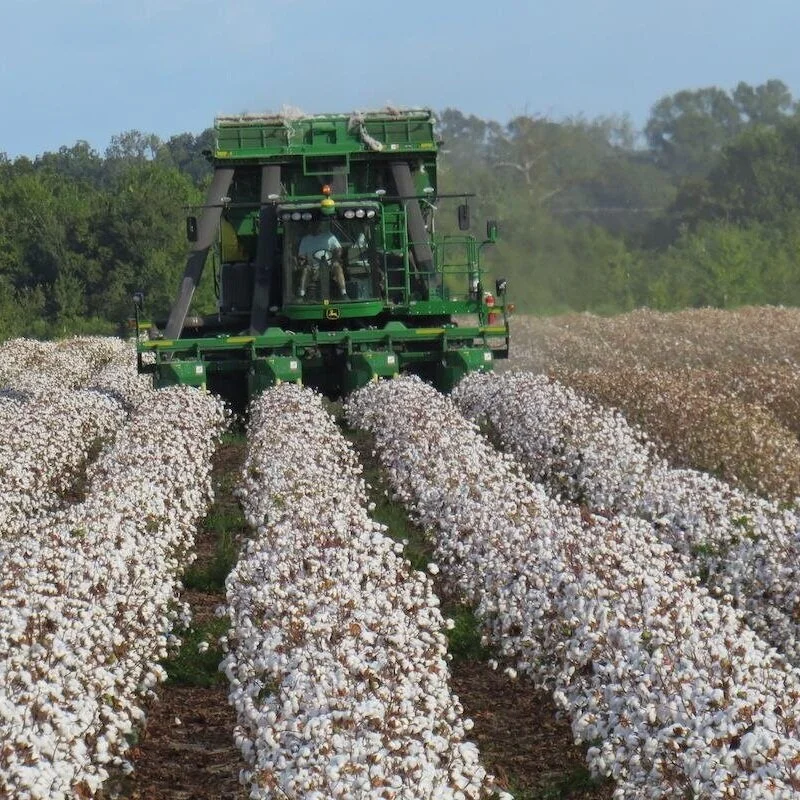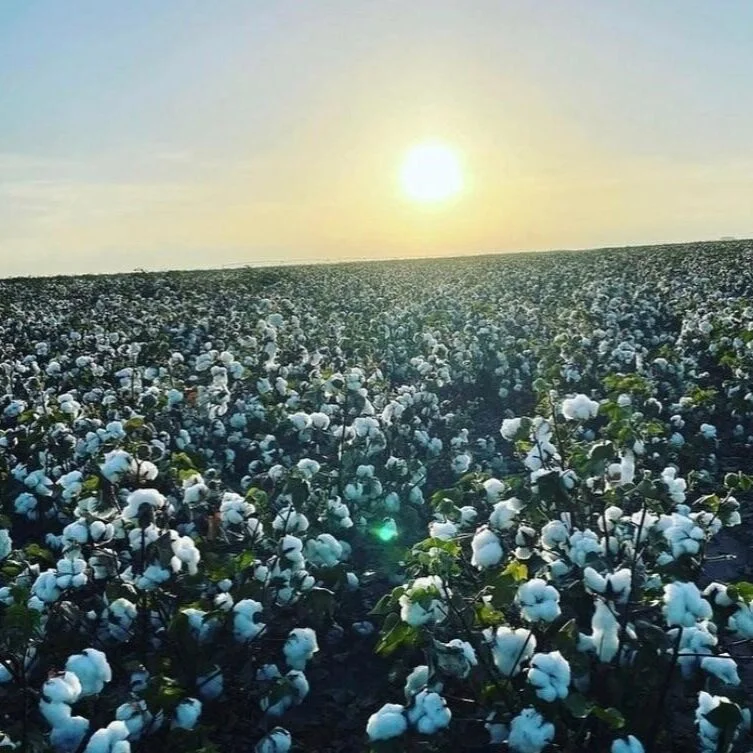Mid-South Cotton
Most of the cotton is past the point of scouting for insects, a welcomed time by growers and consultants. Most expect a large harvest in October
Harvesttime is upon us for corn, grain sorghum and soybeans. Growers are pleased with yields so far. Hurricane Ida caused a scare in Louisiana, which encouraged harvest, but the damages were isolated to southern Louisiana and Mississippi.
Read More
Hurricane Ida Potential Crop Damage
The cotton crop is in really good shape this year across the Delta and Southeast, with its highest rating in five years.
However, Hurricane Ida is threatening to become a major hurricane that could threaten flood and wind damage in that area by Sunday afternoon into Tuesday.
(To see daily updates from DTN meteorologists and follow the track on Ida, go to www.dtn.com/hurricane-ida)
First, a look at the current crop situation in the area that could potentially be hit.
According to the USDA NASS data, the good-to-excellent rating of 71% for the cotton crop is the highest rating in the past five years. All states in the Delta and Southeast have at least a 70% rating except for Tennessee, which is at 67%.
Read More
Producers See Big Savings With Wide-Row Cotton
Darrell and Donnie VandeVen believe they have found a better way to grow cotton.
The brothers run a 6,000-acre row crop operation in northeastern Louisiana. In recent years they say they were just breaking even on their cotton crop, but they weren’t ready to give up on it.
Read More
Mid-South Cotton
A lot of cotton acres are just about to the point of letting go for the season, but late season pests are presenting growers with difficult management decisions. Pests vary across the Midsouth, but many areas are still fighting spotty plant bugs and a second wave of bollworms. Though population levels, for the most part, are nothing to write home about, the timing presents a difficult choice.
Saltmarsh caterpillars are being reported in extreme numbers in soybeans, and treatments are going out in Arkansas and Mississippi. Although not seen in such high numbers very often, they are causing foliage loss in some areas.
Corn harvest is underway in much of the Midsouth, and yields are excellent. There is light at the end of a very long tunnel this year.
Read More
Diagnosing In-Season Potassium Deficiency In Louisiana Cotton
Potassium (K) is the second most critical nutrient after nitrogen (N) for cotton production. Potassium deficiency can cause significant lint yield reduction with reduced fiber quality. Cotton experiences K deficiency for several reasons.
One of the main reasons is cotton grown in soils with low soil-test K level and received no potassium fertilizer. Also, any biotic or abiotic stresses during the growing season such as insect damage, diseases, nematode, compaction, drought etc. that suppress cotton root growth result in reduced K uptake and increased deficiency.
Read More
Cotton Leafroll Dwarf Virus In Fields, But Disasters Remain Rate
The sky isn’t falling when it comes to cotton leafroll dwarf virus.
That’s the message Auburn Extension Cotton Agronomist Steve Brown made clear in a presentation to the mid-year board meeting of Southern Cotton Growers at the Ritz-Carlton in Amelia Island, Fla. July 22
Read More
LACA’s Hank Jones Named NCC Foundation Interim Trustee
Long-time Louisiana Agricultural Consultant Association full member and current executive board secretary Robert “Hank” Jones of RHJ Ag Consulting in Winnsboro, Louisiana, has been named an interim trustee on the National Cotton Council Foundation board.
Jones also serves as chairman of the Beltwide Consultant’s Conference. In addition, he is a voting member of the National Alliance of Independent Crop Consultants.
Read More
Cotton Board Holds In-Person Annual Meeting & Approves Cotton Incorporated's '22 Budget For $82M
The Cotton Board recently held its 2021 Annual Meeting, in-person, in Durham, North Carolina, along with Cotton Incorporated’s Board of Directors. This is the first in-person meeting for both boards since March 2020. During this meeting, board members serving the Cotton Research and Promotion Program reviewed, analyzed, and voted to recommend Cotton Incorporated’s 2022 budget of $82 million to the Secretary of Agriculture. This budget recommendation reflects a $2 million increase from 2021.
Read More
Demand Driven Bulls Trample Over 93 Cent Resistance In Cotton
Many thought USDA’s August estimate of the U.S. crop might be a scene from a “wild wild west shoot-‘em-up,” but everyone was bowled over, nonetheless. So much for the market not pushing above 93 cents until the September supply demand report! USDA’s August estimate was what I had expected the September report to look like. Kudos to USDA for biting the bullet.
Read More
Mid South Cotton
Plant bugs are still around, but many see the large stink bug populations coming to an end in a couple weeks. Stink bugs are at typical levels, but don’t let them sneak in with lapses in sprays for plant bugs.
Bollworms are still below average populations, but all dual-gene cotton has been sprayed. Three-gene technologies are still holding well.
Read More
Petiole Sampling For In-Season Nitrogen Management In Louisiana Cotton
Cotton in-season nitrogen (N) status can easily be tracked by different methods such as crop sensing (vegetation indices), measurement of leaf chlorophyll content, and petiole (leaf stalk that connects the leaf blade to the main-stem) testing for nitrate-N (NO3-N) concentration. Monitoring petiole nitrate-N concentration is the best tool of tracking in-season N status in cotton. This tool allows producers and crop consultants to predict the yield potentials dictated by soil nutrition and environmental conditions and adjust in- season N supply, if needed, to help achieve the highest potential yield.
Read More
Cleveland On Cotton: Lagging Exports Not A Sign Of Weak Demand
The cotton market has now bulled through 90 and 91 cents and set the stage for a challenge of 93 cents. However, that barrier most likely will not fall until the September world supply demand report is released with USDA’s first objective crop estimate. Granted, Mother Nature can continue with her efforts to further trip-up this crop.
Read More
Cotton Market Flirts With 92 Cents
The cotton market nearly traded the 92-cent level as it posted another round of new contract highs. The market is being driven by a sturdy bullish trend and hopes global demand will improve. There are fears rising from the COVID-19 delta variant may cause economic disruptions, but as the world becomes more vaccinated, the global economy should improve. It was interesting to see cotton higher Friday in the fact of a very stout U.S. dollar. The greenback, as with cotton, was higher on larger-than-expected jobs data from Friday’s unemployment report.
Read More
Mid-South Cotton
Cotton gathered substantial heat units last week, but the crop is still a couple weeks late, on average, across the Midsouth. Fingers are crossed for a warm fall with little to no rain to finish out the cotton crop. A little early planted cotton in Mississippi is at cutout, so the countdown begins.
Bollworm and tobacco budworm numbers are on the rise, already reaching the highest populations we’ve seen in years. This is just the beginning, but the southern regions are sending out treatments.
High moisture corn harvest has started. Reports are a lot of the crops have rebounded from the less-than-ideal beginnings and look promising now – we still have hope for the cotton. No yield reports have been announced yet.
Read More
Recovering Demand Supporting Cotton Prices
Cotton demand has recovered faster than anyone expected since the pandemic slammed the market last year and will continue to support prices moving forward, according to National Cotton Council Economist Jody Campiche.
Read More















